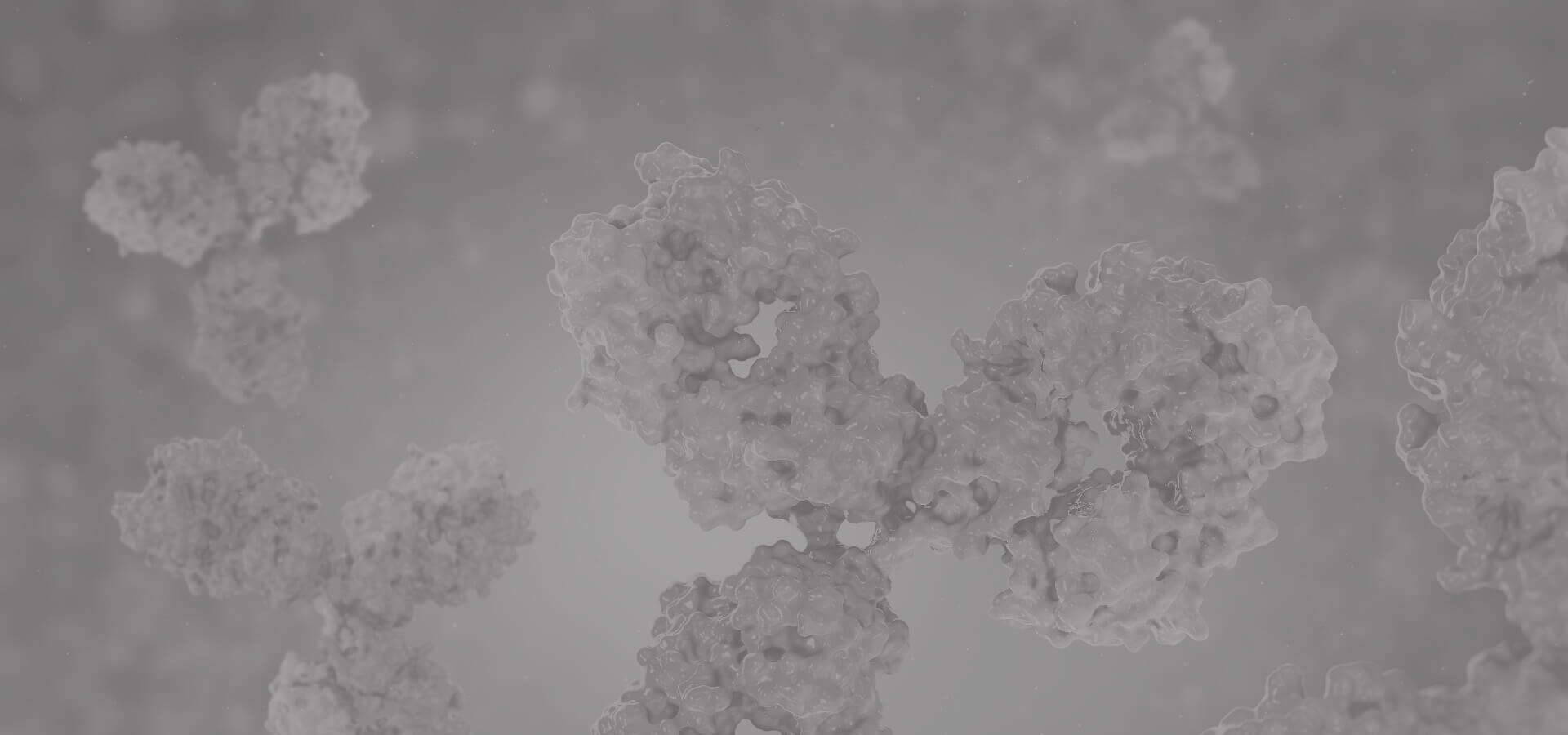BTRC Antibodies
Background
BTRC gene encoding a protein called beta TrCP, the protein as an E3 ubiquitin ligase key components widely exist in eukaryotes. It participates in regulating the activities of important signaling pathways such as Wnt, Hedgehog and NF-κB by specifically recognizing phosphorylated substrates and mediating their ubiquitination and degradation. Studies have shown that BTRC plays a key role in core biological processes such as cell cycle progression, DNA damage response and immune regulation. This gene was simultaneously identified by multiple research teams in 1999. The analysis of its structure revealed how the unique β -helical repeat domain specifically recognizes the degradation motif of the substrate protein. In recent years, in-depth research on BTRC has not only deepened the understanding of the ubiquitin-proteasome system, but also provided new molecular targets for cancer treatment and the development of immune disease drugs.
Structure of BTRC
The molecular weight of the protein encoded by the BTRC gene is approximately 45-50 kDa, and the specific value may vary slightly among different species and transcriptional variants. This protein is one of the key components of the SCF (Skp1-Cul1-F-box) E3 ubiquitin ligase complex. Its structural feature is the presence of seven consecutive WD40 repeat sequences, forming a typical β -propeller conformation. These repetitive sequences form specific substrate binding interfaces that can recognize the phosphorylated degradation motifs of various important signaling proteins, such as β-catenin, IκB, EML1, etc. BTRC regulates the activity of key signaling pathways such as Wnt, Hippo, and NF-κB by mediating the ubiquitination modification of target proteins. Its molecular surface features highly conserved hydrophobic cores and a distribution of charged residues, ensuring specificity and affinity for substrate binding. This protein plays an irreplaceable role in processes such as cell cycle regulation, DNA damage response, and embryonic development.
 Fig. 1 BTRC-Dependent IκBα Degradation is Pivotal for circ-FAM169A to Promote IDD.1
Fig. 1 BTRC-Dependent IκBα Degradation is Pivotal for circ-FAM169A to Promote IDD.1
Key structural properties of BTRC:
- Contains seven WD40 repeat motif, space configuration of beta propeller form is formed
- Keep the hydrophobic core to maintain structural stability
- Specific substrate-binding grooves recognize phosphorylation degradation signals
- C-terminal helices are involved in the assembly of the E3 ubiquitin ligase complex
Functions of BTRC
The core function of the BTRC gene-encoded protein (β-TrCP) is to serve as a key substrate recognition subunit for E3 ubiquitin ligases, mediating the ubiquitination and degradation of various important regulatory proteins. However, it is also widely involved in a variety of key physiological and pathological processes such as cell cycle regulation, DNA damage response, immune inflammatory response and embryonic development.
| Function | Description |
| Protein-targeted degradation | Combined with the phosphorylation substrate specificity recognition, mediated the ubiquitin polymer modification, and then by protease degradation. |
| Cell cycle regulation | By regulating the stability of cyclins such as Cyclin and p21, the normal progress of cell division is ensured. |
| Regulation of the NF-κB signaling pathway | Promote the degradation of IκBα, activate the NF-κB pathway, and participate in immune and inflammatory responses. |
| Inhibition of the Wnt/β-catenin pathway | Mediate the ubiquitination and degradation of β-catenin and inhibit the excessive activation of the classical Wnt signaling pathway. |
| DNA damage response | Participate in rehabilitation after DNA damage the stability of the protein and apoptosis related factor. |
The recognition of substrates by BTRC is highly dependent on specific phosphorylated degradation modalities. This characteristic enables it to precisely regulate the dynamic balance of multiple signaling pathways and play a core role in maintaining intracellular homeostasis.
Applications of BTRC and BTRC Antibody in Literature
1. Lim, Yvonnenyi, et al. "WBP2 promotes BTRC mRNA stability to drive migration and invasion in triple‐negative breast cancer via NF‐κB activation." Molecular oncology 16.2 (2022): 422-446. https://doi.org/10.1002/1878-0261.13048
The article indicates that WBP2 enhances the mRNA stability of BTRC, promotes the ubiquitination and degradation of IκBα, thereby activating the NF-κB signaling pathway, ultimately accelerating the invasion and metastasis of triple-negative breast cancer, and is associated with a poor prognosis for patients.
2. Zheng, Qi, et al. "miR-224 targets BTRC and promotes cell migration and invasion in colorectal cancer." 3 Biotech 10.11 (2020): 485. https://doi.org/10.1007/s13205-020-02477-x
The article indicates that miR-224 directly targets BTRC and inhibits its protein expression (without affecting mRNA), thereby activating the Wnt/β-catenin signaling pathway and promoting the migration and invasion abilities of colorectal cancer cells.
3. Li, Shiyuan, et al. "Lnc-SELPLG-2: 1 enhanced osteosarcoma oncogenesis via hsa-miR-10a-5p and the BTRC cascade." BMC cancer 22.1 (2022): 1044. https://doi.org/10.1186/s12885-022-10040-5
The article indicates that Lnc-SELPLG-2:1 can relieve the inhibitory effect on BTRC by competitively binding to hsa-miR-10a-5p, thereby upregulating the expressions of VIM, MMP9 and MMP2, promoting the proliferation and migration of osteosarcoma and inhibiting apoptosis.
4. Qi, Weiwei, et al. "The critical role of BTRC in hepatic steatosis as an ATGL E3 ligase." Journal of Molecular Cell Biology 15.10 (2023): mjad064. https://doi.org/10.1093/jmcb/mjad064
The article indicates that BTRC, as an E3 ubiquitin ligase, specifically ubiquitinates the ATGL protein (K135 site) and promotes its degradation, thereby intensifying lipid deposition in the liver. Inhibiting BTRC can upregulate ATGL and alleviate hepatic steatosis, providing a potential therapeutic target for NAFLD.
5. Yan, Qijia, et al. "EBV-miR-BART10-3p facilitates epithelial-mesenchymal transition and promotes metastasis of nasopharyngeal carcinoma by targeting BTRC." Oncotarget 6.39 (2015): 41766. https://doi.org/10.18632/oncotarget.6155
The article indicates that EBV-miR-BART10-3p directly targets and inhibits the expression of E3 ubiquitin ligase BTRC, promoting the accumulation of downstream β-catenin and Snail, thereby enhancing the invasion, migration and epithelial-mesenchymal transition of nasopharyngeal carcinoma cells, which is associated with poor prognosis of patients.
Creative Biolabs: BTRC Antibodies for Research
Creative Biolabs specializes in the production of high-quality BTRC antibodies for research and industrial applications. Our portfolio includes monoclonal antibodies tailored for ELISA, Flow Cytometry, Western blot, immunohistochemistry, and other diagnostic methodologies.
- Custom BTRC Antibody Development: Tailor-made solutions to meet specific research requirements.
- Bulk Production: Large-scale antibody manufacturing for industry partners.
- Technical Support: Expert consultation for protocol optimization and troubleshooting.
- Aliquoting Services: Conveniently sized aliquots for long-term storage and consistent experimental outcomes.
For more details on our BTRC antibodies, custom preparations, or technical support, contact us at email.
Reference
- Guo, Wei, et al. "The circular RNA FAM169A functions as a competitive endogenous RNA and regulates intervertebral disc degeneration by targeting miR-583 and BTRC." Cell Death & Disease 11.5 (2020): 315. https://doi.org/10.1038/s41419-020-2543-8
Anti-BTRC antibodies
 Loading...
Loading...
Hot products 
-
Mouse Anti-CTNND1 Recombinant Antibody (CBFYC-2414) (CBMAB-C2487-FY)

-
Mouse Anti-CFL1 Recombinant Antibody (CBFYC-1771) (CBMAB-C1833-FY)

-
Rabbit Anti-Acetyl-Histone H4 (Lys16) Recombinant Antibody (V2-623415) (CBMAB-CP1021-LY)

-
Mouse Anti-ADIPOR1 Recombinant Antibody (V2-179982) (CBMAB-A1368-YC)

-
Mouse Anti-CCL18 Recombinant Antibody (64507) (CBMAB-C7910-LY)

-
Mouse Anti-APCS Recombinant Antibody (CBYC-A663) (CBMAB-A3054-YC)

-
Mouse Anti-DMD Recombinant Antibody (D1190) (CBMAB-D1190-YC)

-
Mouse Anti-BAX Recombinant Antibody (CBYY-0216) (CBMAB-0217-YY)

-
Mouse Anti-CD33 Recombinant Antibody (6C5/2) (CBMAB-C8126-LY)

-
Mouse Anti-BHMT Recombinant Antibody (CBYY-0547) (CBMAB-0550-YY)

-
Mouse Anti-ARIH1 Recombinant Antibody (C-7) (CBMAB-A3563-YC)

-
Mouse Anti-APOA1 Monoclonal Antibody (CBFYR0637) (CBMAB-R0637-FY)

-
Mouse Anti-CCND2 Recombinant Antibody (DCS-3) (CBMAB-G1318-LY)

-
Mouse Anti-BIRC5 Recombinant Antibody (6E4) (CBMAB-CP2646-LY)

-
Mouse Anti-BCL2L1 Recombinant Antibody (H5) (CBMAB-1025CQ)

-
Mouse Anti-ARID1B Recombinant Antibody (KMN1) (CBMAB-A3546-YC)

-
Mouse Anti-ALB Recombinant Antibody (V2-180650) (CBMAB-A2186-YC)

-
Mouse Anti-ACTB Recombinant Antibody (V2-179553) (CBMAB-A0870-YC)

-
Mouse Anti-AKT1/AKT2/AKT3 (Phosphorylated T308, T309, T305) Recombinant Antibody (V2-443454) (PTM-CBMAB-0030YC)

-
Mouse Anti-CD83 Recombinant Antibody (HB15) (CBMAB-C1765-CQ)

- AActivation
- AGAgonist
- APApoptosis
- BBlocking
- BABioassay
- BIBioimaging
- CImmunohistochemistry-Frozen Sections
- CIChromatin Immunoprecipitation
- CTCytotoxicity
- CSCostimulation
- DDepletion
- DBDot Blot
- EELISA
- ECELISA(Cap)
- EDELISA(Det)
- ESELISpot
- EMElectron Microscopy
- FFlow Cytometry
- FNFunction Assay
- GSGel Supershift
- IInhibition
- IAEnzyme Immunoassay
- ICImmunocytochemistry
- IDImmunodiffusion
- IEImmunoelectrophoresis
- IFImmunofluorescence
- IGImmunochromatography
- IHImmunohistochemistry
- IMImmunomicroscopy
- IOImmunoassay
- IPImmunoprecipitation
- ISIntracellular Staining for Flow Cytometry
- LALuminex Assay
- LFLateral Flow Immunoassay
- MMicroarray
- MCMass Cytometry/CyTOF
- MDMeDIP
- MSElectrophoretic Mobility Shift Assay
- NNeutralization
- PImmunohistologyp-Paraffin Sections
- PAPeptide Array
- PEPeptide ELISA
- PLProximity Ligation Assay
- RRadioimmunoassay
- SStimulation
- SESandwich ELISA
- SHIn situ hybridization
- TCTissue Culture
- WBWestern Blot








